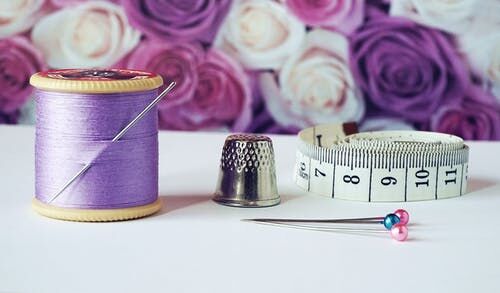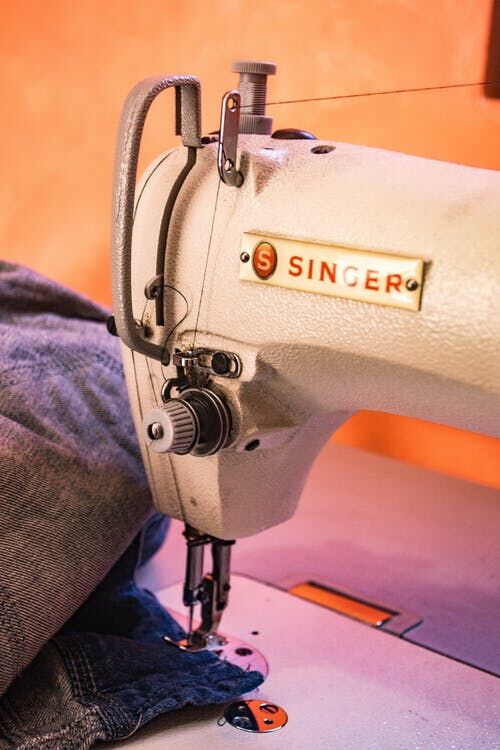When you have a decent sewing machine and a kit to go with it, the next logical step is to look for good sewing machine patterns to begin your projects. Visiting a fabric store might give you inspiration, but the variety there is usually so overwhelming that you may end up being confused and walking away. To save yourself several hours and money as well, a proper pattern is a must.
If you’re a novice at sewing or aren’t sure what to work on next, here are some tips for picking the best sewing machine patterns:
Sewing For Your Body
If you mean to make something for yourself, your best bet might be to take a peek in your wardrobe. You already have several dresses and other types of outfits that look good on you. No matter what their size or measurements are, you know that their cut and shape is suitable for your needs.
Take some time to examine the garment that hangs best on you. Check the length of the sleeve, the hem, the neckline, and the shape of the waist. You might be able to use this information while choosing your new sewing pattern.
Consider Your Fabric
Once you know what fabric you’ll be working with, see how that will affect the pattern you need. If you want a cozy, soft garment, the pattern will be different than for a garment with some structure. Patterns might call for stiff wool, stretch knit, or some other form of fabric. Make sure you choose one that’s working with your own fabric preferences.
Knowing Exact Measurements
There’s no substitute or proper estimate that can replace the good old practice of taking your measurements. Don’t simply settle for a commercial size that fits you; we all know that different brands or shops will have different sizing criteria. Sewing patterns can hardly measure up to each and every one of them.
If you need measurements for your own body, get a friend to help you out. If you’re making something for someone else, make sure you have their exact measurements as well. The circumference of the arms, waist, and hips are of especial importance. You also need the distance between the knees and shoulder, the circumference of the full bust, the shoulder span, and a measurement of the place just above the bust.
Sewing patterns usually have a size guide, which you can check to ensure that all the measurements can be accommodated by its pattern pieces. If the pieces seem to be too large or small, check to see if the shop has a different size. This way, you won’t have to pay for pieces that you won’t use or end up having to go back for more fabric.
Mixing and Matching
You may have to cut some different pattern sizes in order to make the final garment fit. This might be tricky, but it’s sometimes necessary to experiment so that the result is a customized fit. You may have to get some marking material for precise cutting, though.
Decide the Garment
Once you decide on the fabric and have the measurements noted, you can focus on the specific project at hand. If some of the measurements don’t come in handy today, they’ll be useful for future projects.
For now, decide whether you want a skirt, a pair of trousers, a dress, or some other sewing project. From there on, you can start searching online or in a real magazine for the right look. If you follow designers and seamstresses on platforms like Instagram, scrolling through their posts can give you a lot of inspiration.
Other than that, you can simply take a walk and window shop a little. It might also help to look around at what people are wearing. You can then work on something to give your partner on Valentine’s Day
without breaking the bank.
Know What To Observe
If you’re scrolling through your newsfeed, flipping through a magazine, or simply out and about, a likely design might catch your eye. If this happens, make sure you notice and estimate the measurement and features of the garment. The same goes for sewing a cushion cover, a kid’s toy, or any other project.
If you’re going for a garment, the overall shape, hang, and fit all matter a lot. Where the seams are located; does the dress dapper, and are there any darts to establish a fitted style? Other than this, check out the fastening—their style and placement. This information could affect the final look of a sewing project.
Other features of a garment would include the shape of its neck as well as the cuffs, and whether or not there’s a peplum as well. Finally, the fabric and color should also be noted. This way, you can decide on the kind of pattern you need even if you don’t want an exact replica of that inspiring garment.
No Looking at the Picture
When you set about choosing the right sewing pattern, the above observations should be preferable to the picture on the package. The patterns usually have these pictures to give some idea of what you could make. However, they definitely can’t be guidelines for whatever you have in mind.
Instead, you might want to look at the line drawing of the garment one can make form the pattern pieces. This is a much better guide, as you can see the seams and actual shape of the garment without being distracted by the styling or fabric.
Check Online
After you’ve chosen the pattern, don’t buy it just yet! Instead, enter the name and/or number of the pattern on a search engine like Google or Bing. This will enable you to see pictures of other people’s projects and their comments on this specific pattern. Other shapes and fabrics will also become apparent to you, giving you some insight into how versatile this pattern is. Such research might even sway your decision and have you choosing a different pattern, fabric, or shape for your project.
Know Your Websites
When you’re a regular sewer, you should know about certain websites that can help you with your goals. Some sites might be able to help sewing fanatics get a great deal on the fabrics, threads, and patterns they need. Others could help in inspiring you with their beautiful designs. There are also online communities that provide paper and PDF patterns, which you can simply print out as needed.
Finally, there are some amazing websites that combine their databases with a useful search engine. This makes it possible to find and sort sewing patterns by the type of garment, fabric, sewing level, and other features that you want. You can go for the more common patterns or even try out some new designs from independent designers out there.
A PDF printable will require you to have a printer, but you can also purchase a paper pattern if necessary. If you chose the latter, we suggest tracing it first so that you have the original for future use.
Conclusion
While finding just the right sewing pattern for your needs might be a challenge, the tips above will hopefully help to narrow things down. Make sure you have everything you need before sitting down to start a new project. This will save time, money, and a whole lot of hassle as well.


